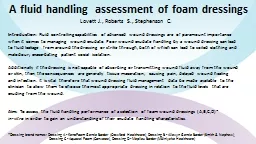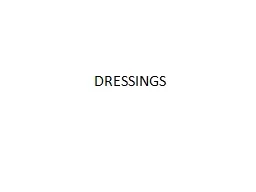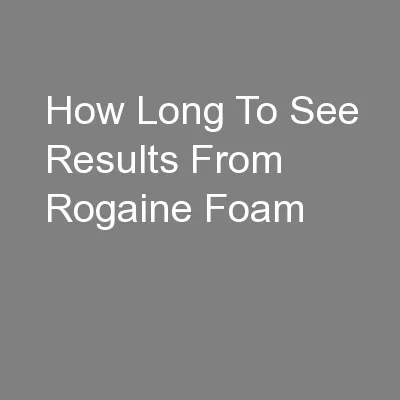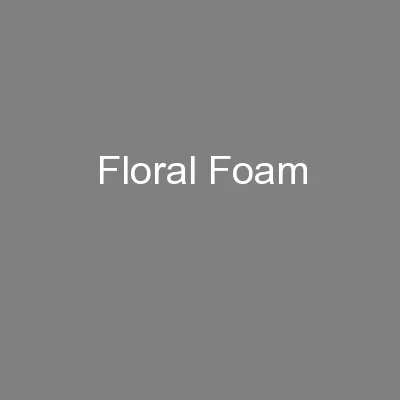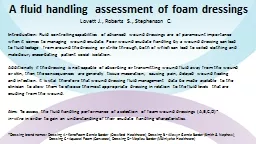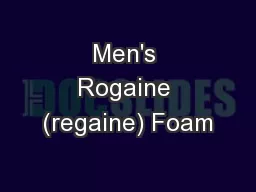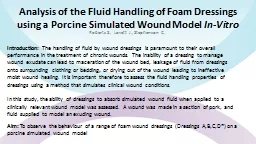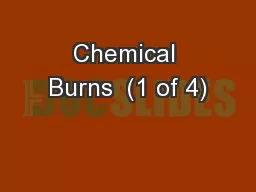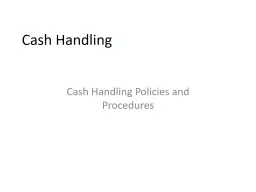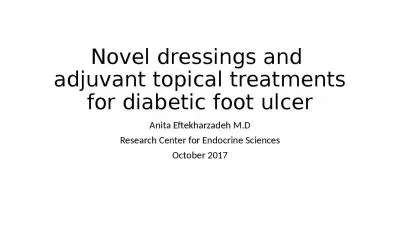PPT-A fluid handling assessment of foam dressings
Author : luanne-stotts | Published Date : 2018-11-01
Lovett J Roberts S Stephenson C Introduction Fluid controlling capabilities of advanced wound dressings are of paramount importance when it comes to managing wound
Presentation Embed Code
Download Presentation
Download Presentation The PPT/PDF document "A fluid handling assessment of foam dres..." is the property of its rightful owner. Permission is granted to download and print the materials on this website for personal, non-commercial use only, and to display it on your personal computer provided you do not modify the materials and that you retain all copyright notices contained in the materials. By downloading content from our website, you accept the terms of this agreement.
A fluid handling assessment of foam dressings: Transcript
Download Rules Of Document
"A fluid handling assessment of foam dressings"The content belongs to its owner. You may download and print it for personal use, without modification, and keep all copyright notices. By downloading, you agree to these terms.
Related Documents

